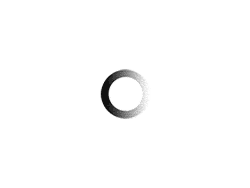The total calories you should consume depends on whether you are a woman or a man. It depends on your body structure and your activity level. So you need to make some adjustments to the numbers that I present.
If you’ve been eating around 1,800 calories per day, you can slowly reduce your intake to 1,600. Work up from this level over a period of one month to 1,400 calories. Do not go below 1200 calories per day. Otherwise, you can overload your body.
If you’re just starting out and you’re eating 2,400 calories, cut your calories to 2,000 or 2,100. If you don’t lose weight in 2-3 weeks, cut your calories. For a month you can go down to 1600 calories and see if you start to lose weight. If you do, stay on this level.
It is not a good idea to make a drastic change in your food intake as your body may react and go into “starvation mode”. In this mode, your body will store more fat, making it difficult for you to lose weight.
Remember not to eat junk food. When you eat quality food, it takes less food to feel full compared to eating junk food.
Proteins, carbohydrates and fats
There are many ideas about what combination or percentages you should eat of the various nutrients: protein, carbohydrates, and fat. I don’t believe there are exact percentages that provide weight loss and good health for everyone. Each of you will require different percentages depending on your weight, health, body structure, emotional makeup, and a variety of other conditions. For this reason, some diet programs work for some people and not for others.
One of the best eating habits programs that will help you lose weight is to eat:
* quality protein
* low glycemic index carbohydrates
*quality fats
* high fiber content
* high water consumption
Quality protein: is essential for the body to survive. There are 8 essential and 14 non-essential amino acids. Protein is used to regulate certain bodily processes by contributing to various chemical reactions and creating a number of body chemicals.
Eating excess protein results in an acidic body, which favors disease. Protein intake alone causes a 25% increase in your metabolism. When combined with fat and carbs, there is only a 10% increase. What this means is that eating more protein and less fat and carbohydrates gives your metabolism a boost.
It is recommended that around 30% – 35% of your eating habits consist of protein.
Carbohydrates: consist of simple and complex sugars. When carbohydrates are ingested, they are broken down into sucrose, which is readily accepted by cells. Sucrose is converted to energy in your cells. If you eat a lot of high-glycemic carbohydrates, your bloodstream becomes saturated with sucrose. Excess sucrose in your cells will be converted to fat and stored.
Since most people have gained weight eating high-glycemic carbohydrates, it is best to change your eating habits and decrease your intake of these carbohydrates. In general, people have been eating 80% high glycemic index (high GFR) foods and 20% low glycemic index (low GFR) foods. You need to change that to 80% low FG and 20% high FG.
This means that you should limit your intake of foods such as potatoes, bread, corn, pasta, rolls, and any flour products. HighGF encourages fat storage as the more sucrose you have in your blood, the more sucrose is escorted into the cells by insulin.
You need to focus on food, which is LowGF. Many of these foods are vegetables with small amounts of carbohydrates and high fiber content.
LowGF discourages fat storage as there is less sucrose in the blood and less is escorted into the cells.
Quality fats: eaten with meals, they prevent sugars from quickly entering the bloodstream.
You need to eat more of the good fats. It is these fats that will help you lose weight. The good fats are omega 3, omega 6 and medium chain fatty acids, MCFA.
Here’s the breakdown of how much of each type of fat you should eat. These percentages are the ones you should work on so that fats provide you with good health and help you keep your weight down.
* saturated fat 10%
* 20% polyunsaturated fat
* Monounsaturated fats 60%
There you have it, the numbers and percentages of protein, carbohydrates and fat that a balanced diet gives you so you can lose weight.



